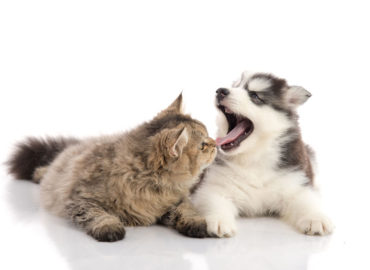Identifying Negative Emotions in your Pet
Identifying Negative Emotions in your Pet
Of the seven emotional behavioural circuits in the brain, three are negative; frustration, fear/anxiety and panic/grief. When faced with a “trigger” or stimulus that evokes a negative emotional response a pet can chose one of four behavioural responses; avoidance, repulsion, inhibition or appeasement. What an owner does in response to these behaviours can influence their pet’s future behaviour.
Avoidance
The aim of this response is to increase distance or decrease interaction with the stimulus. Cats prefer this but a dog’s ability to escape is often compromised by leads and their socially obligate nature. Behavioural “tells” includes gaze avoidance, leaning away and hiding/escape behaviour.
Repulsion
Aggression is also a distance increasing behaviour but the outcome is dependent on the other individual moving away or decreasing interaction and involves some risk of harm. In emotionally normal pets it is generally considered the choice of last resort. Behavioural “tells” progress through increased facial tension, retracted ears and lips, raised hackles, growling/barking, lunging then biting.
Appeasement
Appeasement and inhibition are attempts to gather more information about the potential threat and is more likely if there is a perception of potential benefit. Appeasement is more common in socially obligate species like dogs who have mixed emotions driven by concurrent positive seeking/desire motivations. Appeasement is an active behaviour involving an exchange of information with the stimulus with the aim of reducing negative emotional responses in the other individual and the potential for conflict. Behavioural “tells” include showing of groin region, sniffing, urinating, jumping up or nudging/pawing.
Inhibition
This passive gathering of information is often chosen by socially non-obligate species like cats but can also occur in dogs when there is a high magnitude, rapid approach or sudden proximity of a threat. Behavioural “tells” are standing statue still, muscle stiffness and staring.
All Mixed Up?
Combinations of the above behaviours happen frequently and whilst owners are understandably most concerned about the more extreme repulsive/aggression responses of their pet, understanding that each behaviour is equally important can help avoid potential conflict and improve their pet’s happiness. Owners regularly identifying negative emotional behaviours in a non-threatening context should seek behavioural assistance. Milton Village Vet offers complete behavioural solutions combining a veterinary diagnosis with behavioural trainer assisted recovery.







